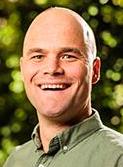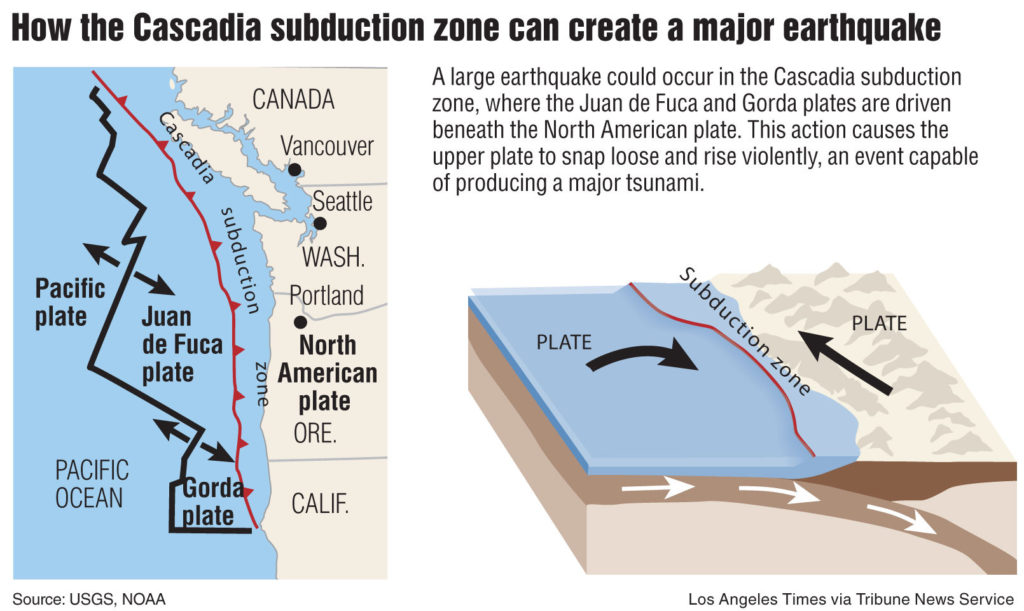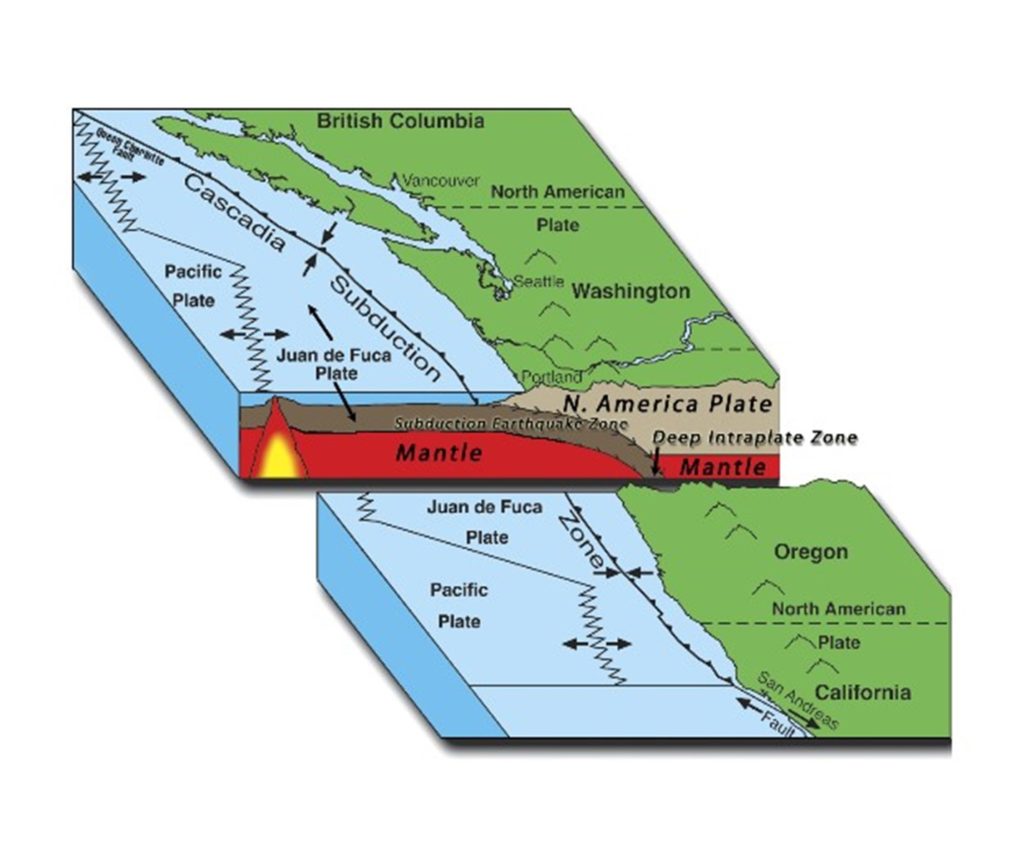
BY MICHELLE KLAMPE/OSU News Service
Oregon State University researchers are joining a new multi-institution earthquake research center dedicated to the study of the Pacific Northwest’s Cascadia Subduction Zone, which is capable of producing earthquakes comparable to the largest recorded globally.
The National Science Foundation has awarded $15 million over five years to the Cascadia Region Earthquake Science Center – to be known with the acronym CRESCENT. The center includes researchers from 14 institutions across the U.S., including OSU and Portland State University, and will be led by Diego Melgar of the University of Oregon.
Initially, the earthquake center will focus on foundational science to better understand the complex dynamics of the Cascadia Subduction Zone, which sits below the Pacific Ocean from northern California to British Columbia.

“Cascadia is a unique tectonic environment. We really don’t have the traditional, everyday seismic signals that give us information about the state of stress of the Earth beneath our feet, but we know that these very big earthquakes occur,” said Pieter-Ewald Share, a co-principal investigator for the new effort and an assistant professor of geophysics in OSU’s College of Earth, Ocean, and Atmospheric Sciences.
Large earthquakes have been typical in Cascadia’s geologic history, with the most recent occurring in January 1700. Yet relatively few earthquakes are felt by the region’s population. Previous research indicates the subduction zone produced earthquakes as big as magnitude 9.0. A future event will significantly impact communities across the Northwest.

“Part of our goal here is to collectively explore and quantify the various data and signals unique to Cascadia, take advantage of emerging cutting-edge laboratory, modeling and computational tools and provide a more holistic idea of the seismic hazard posed by the subduction zone,” Share said. “This new, coordinated effort to push the science forward will positively impact and increase our resilience and preparation for a future event.”
Researchers will map out a strategic plan for the new effort at a kickoff meeting in late October. More than 140 scientists, partners and educators will gather at the University of Oregon to launch the effort and begin building the community.
Three major pillars comprise the center’s work over the next five years. Along with the foundational science, the center will prioritize workforce development, to grow and diversify the next generation of geoscientists, and community collaboration, to translate and communicate the center’s findings and recommendations for improving earthquake resiliency of communities, businesses and infrastructure of the Pacific Northwest.
“The main goal of the center is to bring together the large group of geoscientists working in Cascadia to march together to the beat of a singular drum,” said Melgar, an associate professor of earth sciences at the University of Oregon and the center’s principal investigator and director. “The center organizes us, focuses collaboration and identifies key priorities, rather than these institutions competing.”
CRESCENT plans to build on a foundation of more than three decades of past and ongoing earthquake research at Oregon State, including the Cascadia Lifelines Program, a research initiative to improve performance of critical infrastructure during a major earthquake. Another significant and ongoing effort, the Cascadia Coastlines and Peoples Hazards Research Hub, seeks to increase understanding of the chronic and acute natural hazards and climate changes that face coastal communities.
CRESCENT is one of two earthquake research centers to be funded through the National Science Foundation. The Southern California Earthquake Center, which has operated for more than 30 years, also received funding.



